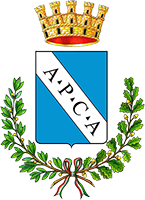
Some historians believe it was built over the “Sacrum Verticem” of the Umbrian-Roman town, where in the past, a temple dedicated to the Sun rose up. From the 6th century, it became a place of worship dedicated to St. Lawrence, a name that was chosen because it recalled the original Cathedral, known as St. Lawrence in Urbestole, situated outside the city walls, along the ancient way of the Via Amerina (now it is the back road Amelia-Orte). It was consecrated to St. Firmina due to the will of Bishop Paschalis during the 9th century, who moved the bodies of the martyred Saints, Firmina and Olimpiade, found near the Castle of Agoliano (maybe the current Lugnano in Teverina), and the relics of St. Imerio, legendary 6th century Bishop of Amelia. The original building had a presbytery over the nave and a crypt below containing relics of Amelia’s two Patron Martyr Saints.
In 1220, due to a fire or an earthquake, the Cathedral was rebuilt, following the Romanesque architecture’s standards. When the Imperial Army of Frederick II occupied Amelia in 1240, the entire religious complex was terribly damaged, and the consequent restoration works begun in 1255. An extension work took place in 1323-24, when new lateral chapels were built into the church, while the wooden choir pews were commissioned in 1411. In later centuries, the church remained unchanged until the night between the 19th and 20th December 1629 when a careless organist left a burning brazier, which caused a fire that almost totally destroyed the right section of the nave. Between 1636 and 1677, radical restoration works began, considerably altering the appearance of the whole building by lowering the level of the nave and removing the crypt. A new choir and a new main altar were built, and the bodies of St. Firmina and St. Olimpiade were placed below it. The facade remained unfinished until 1887.
The church interior is now characterized by the striking decorations of the purist painter Luigi Fontana, who, always in 1887, painted numerous frescoes to decorate the ceiling of the central nave, the elliptical dome and its underlying plumes, and the two lateral transept wings. The Cathedral preservers numerous works of art belonging to various ages, which witness its story: to the right of the Cathedral entrance, there is a small marble column that is supposed to be the one to which St. Firmina was tied while she was undergoing her martyrdom. In the first chapel, the tomb slab of the Bishop Ruggero Mandosi, a work of art belonging to Agostino di Duccio studio, is walled up, while the second chapel to the right belonged to the Farrattini family (cross reference to panel nr. 5).
The entrance leading into this chapel houses two war trophies (standards that are supposed to be stolen from the Turks during the famous “Battle of Lepanto” in 1571). Over this chapel’s altar hangs an important painting, an early work by Federico Zuccari (Sant’Angelo in Vado, 1539 – Ancona, 20 luglio 1609), and to its sides there are two funeral monuments of Bartolomeo II and Baldo Farrattini by Giovanni Antonio Dosio and Ippolito Scalza. Located in the chapel situated in the right transept is a big panel representing The Last Supper, painted in 1538 by Giovan Francesco Perini (Amelia, born before 1523 – died after 1574), who worked in Rome, in the Vatican, during the years of Raphael and his studio. In the middle of the left transept altar in baroque structure, is located a precious 15th century panel by the anonymous Master of Assumption of Amelia. It is a work of art to which the popular devotion recognised the miracle of being rescued from the terrible earthquake of 1703. For this reason, this work is publicly shown only in August.
In the first chapel on the right, we can admire a 15th century baptismal font, with a statue of St. John the Baptist on it, which had been inspired by Donatello’s sculptures. In the same chapel, inside a recess on the right wall, the sepulchre of the Bishop Giovanni Geraldini is inserted, above which a very refined low relief is located. Made by the Renaissance sculptor Agostino di Duccio, operating in Amelia on behalf of the Geraldini family and also in their chapel in the Church of St.Francis, the relief depicts the Madonna with Child and three allegorical pictures of the Virtues contemplating the Baptist.
The diocesan collection, housed inside the rooms near the Cathedral, preserves, among many others, Antoniazzo Romano, Giovan Francesco Perini, Bartolomeo Barbiani’s works of art.


